Attempt of the first-ever winter ascent K2. And why K2 is called the Polish Mountain!
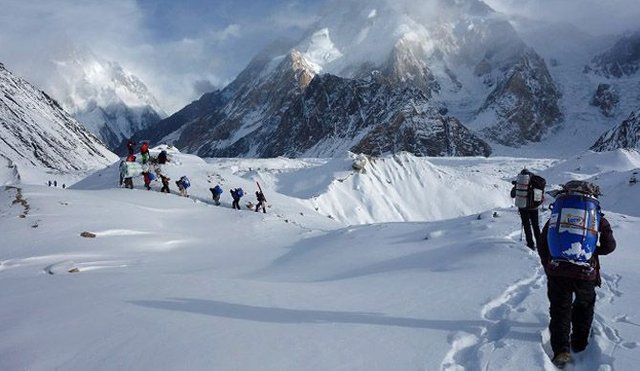
(The first photos of the expedition)
Just a few days ago, the whole Poland had Kamil Stoch on its lips. In the historic 4-Hills-Tournament, he managed to repeat the German ski jumper Sven Hanavald's achievement by win each of the four competitions in this Tournament. In the meantime a few thousand kilometers east of Poland, the expedition of Polish himalayst who want to climb the last eight-thousander, wich has never been taken in winter and it's also the second highest peak in the world (8611 meters above sea level). Will we celebrate the next historical success of Poles? We will certainly know this over the next few weeks. Especially on this occasion I gathered a few things that will allow you to understand why this one of the most difficult peaks in the world is called Mountain of Poles. :)
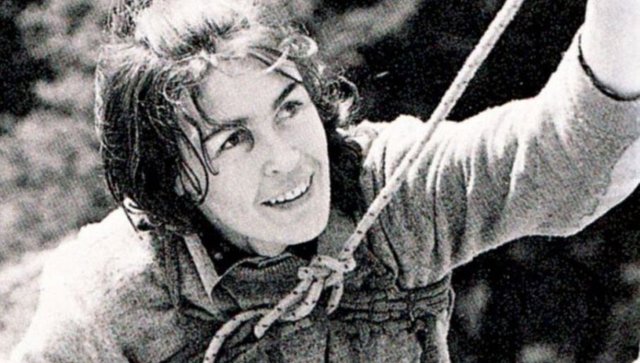
(Wanda Rutkiewicz photo. Seweryn Bidziński)
We are used to death in the mountains, because each one of us is deeply rooted in the idea that it may reach me. Though nobody really believes it - always others die in the mountains. "
Unfortunately, on 12 May 1992 she has been seen last time. With her passion till her last moments of her life, until she disappeared under Kanchendzanga summit. In her lifetime, she wrote down on the pages of history, climbing the most distant eight-thousander north of the Karakorum range, also known as K2. And even though the first conquerors of this summit, Achille Compagnoni and Lino Lacedelli, had reached him less than 30 years earlier, she was the first woman to have managed to do the same as the Italian climbers. And of course the first Polish woman:)
On 13 June 1986 the summit push ended with a triumph for Wanda Rutkiewicz. On the day of her name-day she gave the gift herself(It is more popular in Poland to celebrate a name day than a birthday). On the day of her name-day she gave the gift herself. She overcame the mountain, which due to the number of fatal accidents is also known as the Mountain murderer. Statistically, one of the four climbers never returns. Just like thirteen other bold guys who died on their way to the peak in' 86.
To this day, K2 is considered the most difficult peak to climb. This is due to the combination of technical obstacles, including climbing elements over 8,000 m above sea level and the significant role played by altitude disease affecting mountaineers above the "Death Zone" (7,900 m above sea level). This happens because the air is thinned at high altitudes. And although the oxygen content is equal to 21 % like in any other place on earth, the low atmospheric pressure that occurs high makes us able to breathe only 1 out of 3 parts of the oxygen that we are able to provide the body with breathing at sea level. The consequence of being in this zone may be disastrous. A reduced amount of oxygen in the blood leads to hypoxia, which can lead to life-threatening edema. And probably the most dangerous of the possible, i. e. lungs and brain. An additional threat in such cases is the loss of a well-analysis of the situation. People affected by cerebral oedema can make wrong decisions and often show irrational attitudes, ignoring the danger and not stop climbing. There were some cases when experienced climbers lost themselves during their return journey to the camp. That is why it is said that preparations for the summit also include preparation for its return. What I think is obvious.
I am briefly listing other symptoms of an altitude disease. (acute mountain sickness, AMS)_
- headaches and dizziness
- constant fatigue
- diarrhea
- dyspepsia
- sleep disorders
Polish roads
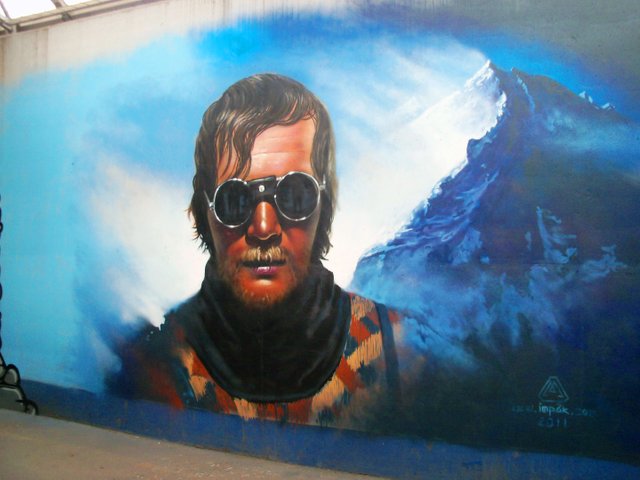
(Jerzy Kukuczka – graffiti in Bogucice PL)
So far, just over 300 people have reached the peak of the mountain. Thirteen climbers from all this number came from Poland. As I mentioned earlier, Wanda Rutkiewicz left the first Polish traces on the top. However, already in the same summer, two other expeditions from Poland, including Jerzy Kułaczka, Tadeusz Piotrowski, Przemysław Piasecki and Wojciech Wróż were on the top.
"On each of the eight-thousanders, apart from Lhotse, I climbed a new way or wintertime. That is the most important thing for me. Having a path that many climbers follow today does not give me such satisfaction."
These words were said by one of the participants of summer entrance on top of K2 Jerzy Kukuczka. It is thanks to him and the rest of the Polish Himalayas that we owe the fact that 4 out of 9 ways to the top of "Chagori" is marked out or completed by the Poles. The first of these tracks is called the "Polish Road". And it was set by the author of the above quote and Tadeusz Piotrowski, who died tragically falling into the abyss during his return from the peak. Nobody ever repeated this road. An unfortunate accident also occurred when the second trail leading to the summit was marked out. The Magic Line (the name of the way to the top) buried Wojciech Wróż, an experienced Himalayan climber from the Polish-Czech expedition. The team, apart from Wojciech Wróż, consisted of Przemysław Piasecki and Peter Bozik. However, the trail was repeated in 2004, unlike in the case of the Polish Way. Unfortunately, however, there was also a tragedy during the climb. The Spanish Himalayan Manel de la Matta, due to the worsening state of his health, abandoned entering the peak and died of peritoneal inflammation in the camp.
Other Poles also climbed up to this lethal summit. These were: Krzysztof Wielicki (1996), Ryszard Pawłowski and Piotr Pustelnik (1996), Dariusz Załuski (2011), Adam Bielecki (2012), Janusz Gołąb and Marcin Kaczkan (2014).
Winter attempts
Very low temperature, strong wind and many technical difficulties. All this and more awaits our Himalayas, who in December 2017 started their expeditions for the last unbeatable eight-thousand summit in the winter time. However, they are not the first. There were already a few attempts before them. However, they are not the first. There were already a few attempts before them. The first attempt belong to group led by Andrzej Zawada. The team of 23 Himalayas took up this task at the time of 1987/1988. poor weather conditions made the expedition unsuccessful. Many of the participants of that expedition suffered frostbite. The equipment had problems with weather conditions. By this It leaves dreams of a winter entrance to the K2 for the next long years. And so until winter 2002/2003, when Krzysztof Wielicki (also a leader of the current team) decided to return to the idea of winter entrance. Again, like in the case of the first approach, weather conditions turned out to be merciless for the team who finally wanted to get to the top of Czagori in winter. The mountain remained untouched.
The third attempt was made by the Russians. It was wintertime at the time of 2011/2012, and I think anyone will be surprised that it was the weather that interfered with the Himalayan plans.
The fourth attempt was impossible due to the lack of permission from the Chinese authorities, which decided that the expedition could not take place due to the terrorist threat. Therefore, the Himalayans had to leave with empty hands. And they were about: Polish Adam Bielecki, Russian Denis Urubko and Bask Alex Txikon.
(National Polish Expedition Team K2)
Achieving K2 is a success for every Himalayan. But getting it in the winter will be a wonderful reward for all the achievements they have accumulated throughout their lives.
Nowa hope.
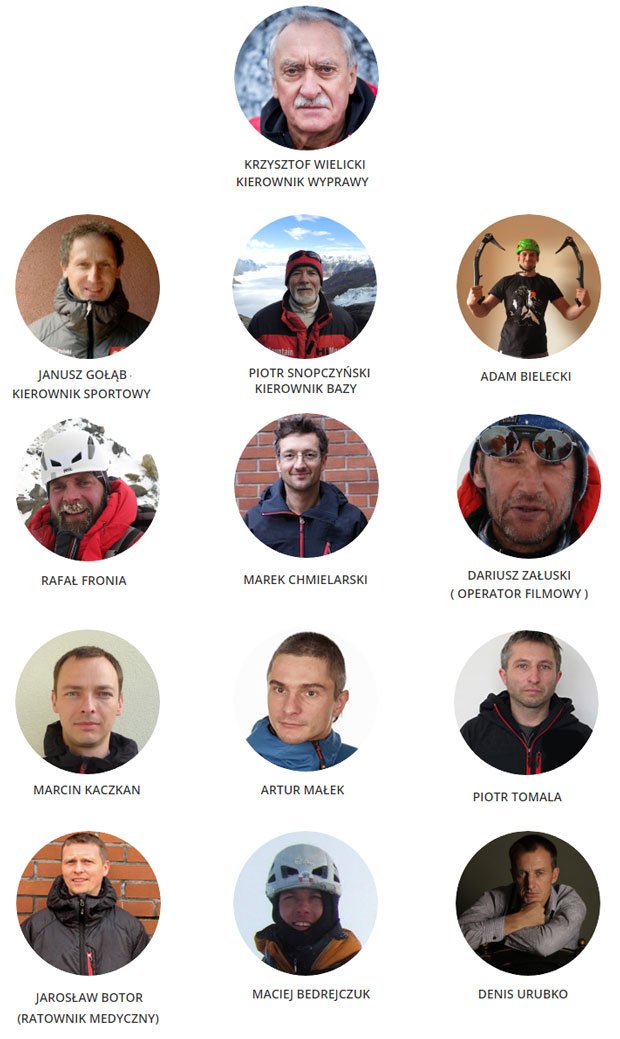
(National Polish Expedition Team K2)
Achieving K2 is a success for every Himalayan. But getting it in the winter will be a wonderful reward for all the achievements they have accumulated throughout their lives.
And this is what Krzysztof Wielicki, the head of the expedition, who will guide the next hopefully successful attempt. Poles face a difficult task. However, it has to be admitted that the team is really strong. Five members of the team looked at the world around them from the summit of Chagori. Experience gained from other eight-thousanders will also have a huge impact on the success of the fifth attempt to enter this summit in history. However, the weather in the mountains can also be unpredictable. And as the last reports from K2 suggest, it don't want to give up at all. Poles are planning to push the summit through the south-eastern pillar. The trail, which wants to use the so-called Basque Way, runs in a straight line and connects on the shoulder in a later stage with Abruzzi Spur. This is considered the safest option. There are plans to set up three camps and perhaps a fourth at an altitude of 7800 metres from which a peak attack will take place.
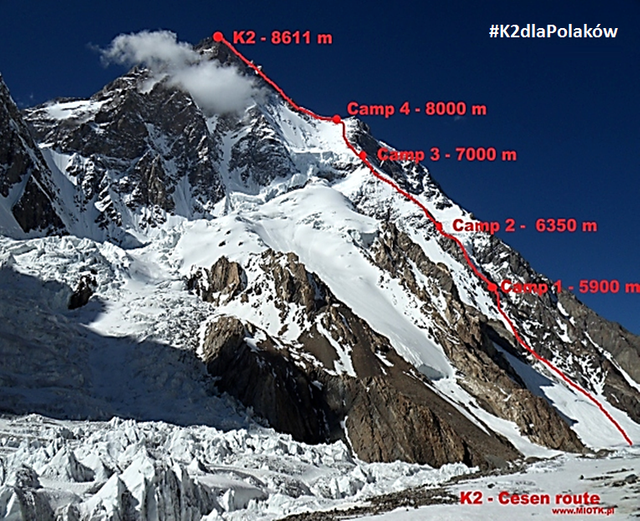
(planned climbing road on the K2, the Basque Way, also called the Cesena Way - Marcin Miotk)
Will it be possible to capture K2 in winter? We do not know. And surely, if we ask anybody from the team this answer won't be obtained. Now the members of the expedition will have to struggle with a strong wind. The stake in this fight will be the keeping of the camp. We are still believing in their skills and hope that the weather will turn out to be grace, and the fourth attempt to conquer Chagori in winter will be a success for Polish Himalayas. And most importantly, everyone will return whole, healthy and without frostbite:)
I encourage all users of Facebook to follow their profile. Polski Himalaizm Zimowy 2016-2020 im. Artura Hajzera on it you can follow the progress of the Polish Himalayans.
Sources
photo 1
photo 2
photo 3
graphic 1
grapihc 2
text:
tvp.info, national-geographic.pl, pap.info, wspinanie.pl, nytimes.com, wikipedia, naukawpolsce.pap.pl, wyborcza.pl

Wow, are you a polish?
excellent post.. emotional and wonderful photos and information. congratulations